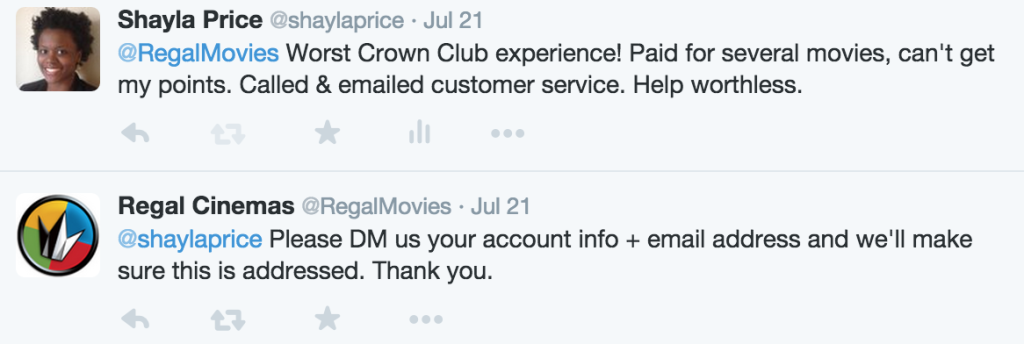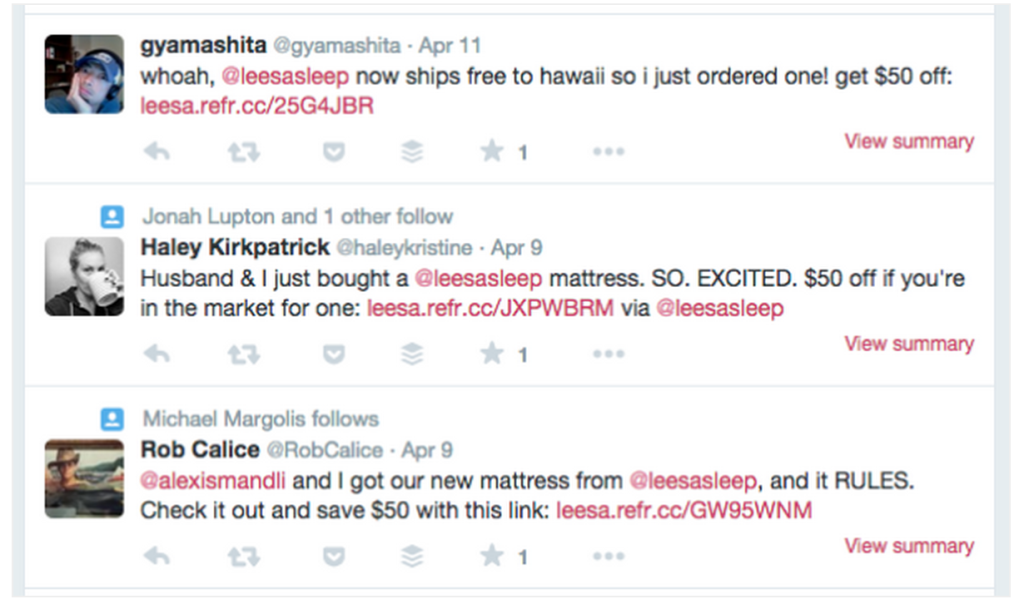If you’re shopping in a store you know well and the sales clerk parades you around each department, only to realize at the end of the tour that you’re a long-time customer, it’s awkward.
It’s a clear sign that the store brand doesn’t know how to personalize their customers’ experiences. Plus, it’s a waste of time for you, the buyer.
This experience is no different for online shoppers.
Customers at different stages in the customer decision making process need to be approached and nurtured differently, and content marketing is the perfect way to tailor your approach.
After all, content marketing is all about strengthening customer relationships with your brand over time. But in order to execute content marketing successfully, you must know where people are in the customer lifecycle.
Content for a potential shopper differs from a loyal customer, so learn how to avoid turning shoppers away with the wrong type of content. After all, your shoppers aren’t all created equally: Research shows that 96% of people visiting your website aren’t ready to purchase.
Content marketing plays an integral role in nurturing those leads. It also helps guide potential buyers through every stage of the sales process.
That’s why it’s important to continually create content that’s customized to the needs and behaviors of the prospect.
Here are three ways you can use content marketing to engage shoppers at every stage of the customer lifecycle.
Create Videos to Ignite Prospects’ Interest
From brand discovery to customer engagement, video provides multiple benefits to your business. A survey found that videos actually help people with their purchasing decisions. Plus, 73 percent of buyers stated that they are more likely to purchase a product after watching a marketing video.
Researcher James McDavid agrees, “Online video offers opportunities that are distinct from TV; we’re talking about data, interactivity and different means of distribution here, that are open to marketers looking to share their messages with people through video.”
Success stories like Dollar Shave Club show just how effective videos can be for spreading brand awareness quickly. As a relatively small company, Dollar Shave Club released a promotional video that went viral, reaching more than 2 million views within three days.
The result?
The company ran out of inventory in the first six hours, and they quickly skyrocketed from a small brand to a well-known name.
Dollar Shave Club had a clear intent with their video: They wanted to show people who they were and get word about their brand to spread. Their purpose was not to encourage shoppers to stay loyal or engage with their current client base — they were targeting prospective buyers, and this laser focused approach worked wildly well.
As it relates to the customer life cycle, use video to build awareness and attract your target audience. Equip potential buyers with enough information to trust your brand and pique their interests.
To drive consumers down the sales funnel, Steve Rotter, VP of Marketing at Brightcove, says to create branded video channels to spark interest and to embed videos in email to make the purchasing process easier.
Key Takeaway: Design a video campaign that will create trust with your potential buyers.
Use UGC to Convert Clients Into Evangelists
Our society is shifting toward a desire for more transparency. When people buy products, they want to know upfront whether it’s worth the money.
The era of “salesy” customer representatives are gone. Entering is user-generated content (UGC). People trust their peers and folks who have direct experience with the products they want.
The best UGC incorporates the talents of its consumers, while generating interest and possibly brand selection amongst wavering consumers.
In 2014, Starbucks launched its White Cup Contest encouraging customers to doodle on their cups and submit pictures of their entries. Almost 4,000 customers participated in three weeks.
Starbucks gained positive publicity and proved that it valued customer feedback.
Nielsen reports that “online consumer reviews are the second most-trusted source of brand information and messaging.” This rings true with eCommerce sites, like Netflix and Groupon, where customer reviews are requested after almost every purchase.
When you begin to build relationships with your prospects, recognize that they want solutions to their problems. As needed, produce in-depth content that includes essential information about the buyer’s need and how your business can meet that demand.
Key Takeaway: Develop marketing strategies that generate goodwill toward your brand.
Implement Social Media Strategies to Reengage Current Customers
Twitter is increasingly becoming the first source of news for people, and nearly 65% of Snapchat’s 100 million daily users are creating stories of their lives through photos. This represents the force and influence behind social media channels.
If used correctly, social media offers a real-time avenue to solving your customer’s needs. When clients have access to your brand, you can solve problems within days, sometimes minutes.
Recently, I experienced issues with Regal Cinemas. After tweeting about my displeasure, I received help in less than 45 minutes. Read their response to my tweet:
Businesses sometimes fall short by thinking about marketing as a short-term gain. Instead, by focusing on long-term growth and acquisition, you can reach more people.
Leesa, an eCommerce mattress store, amplifies word-of-mouth by running customer referral campaigns. The company began by delighting their existing customers and helping them spread the word. See the tweets below.
These three techniques are not mutually exclusive. Pregnancy Magazine managed to pull off a great marketing campaign with UGC via social media.
The publication generated engagement on Facebook by encouraging moms to share personal stories about their pregnancies — a perfect way to reach the company’s target audience.
Leverage content marketing to educate prospects while reinforcing solutions to their needs. In addition, pay attention to your existing customers who vie for your attention to remedy brand complaints; make them feel confident and ensure them that they made the right brand decision.
Key Takeaway: Social media offers an opportunity to earn referrals and listen to your customers’ concerns.
Conclusion: Add Variety to Your Content Marketing
Businesses must establish themselves as trusted brands to consumers. Delivering balanced and insightful content, keeps visitors coming back for more.
Be mindful of how content plays a role in your customer life cycle. Whether a prospect or loyalist, each piece of content must be targeted in a manner to fit every stage of the buying process.
Spruce up your content marketing strategy with video, UGC, and social media.


















 Join a free demo, personalized to fit your needs
Join a free demo, personalized to fit your needs